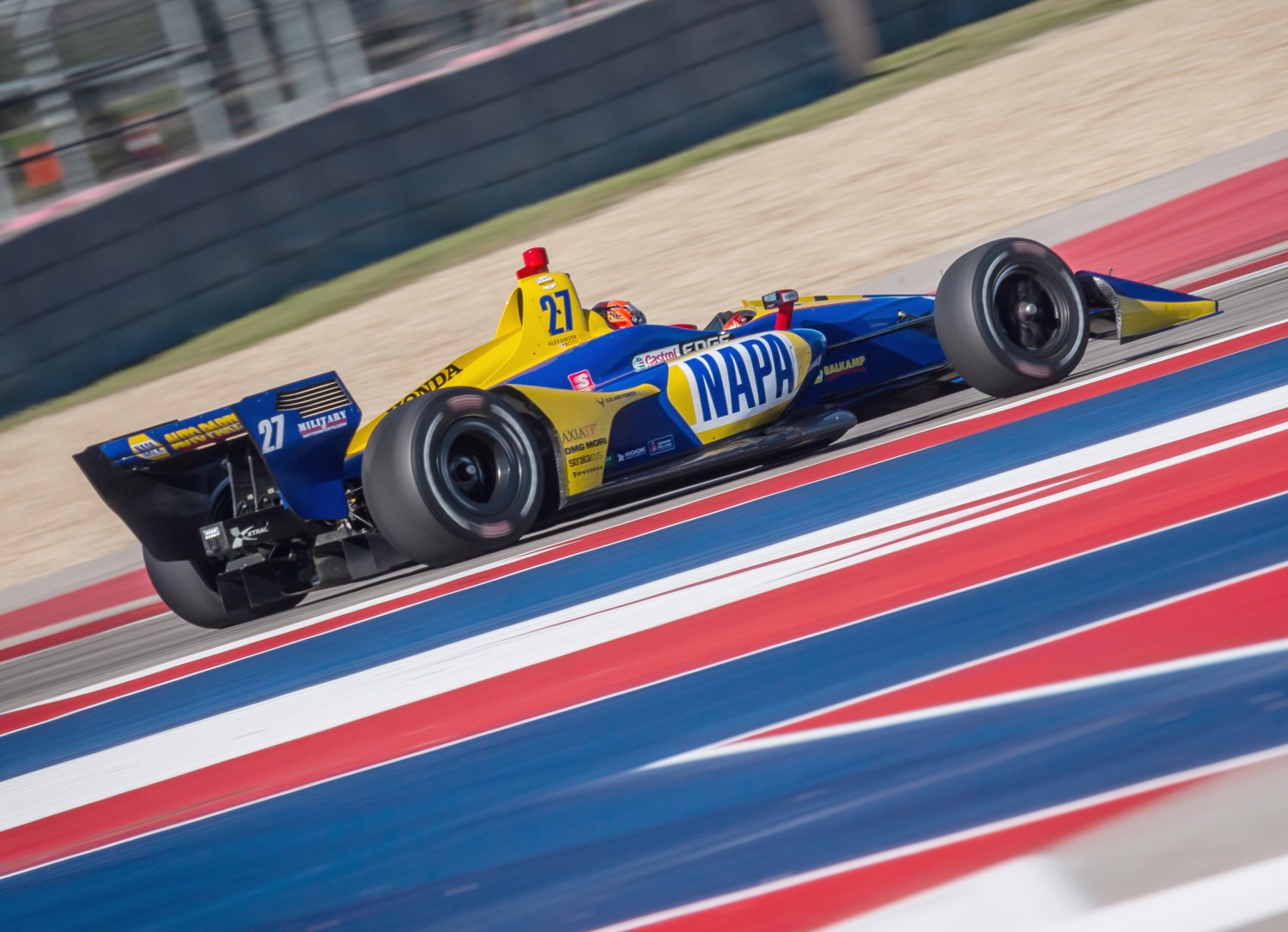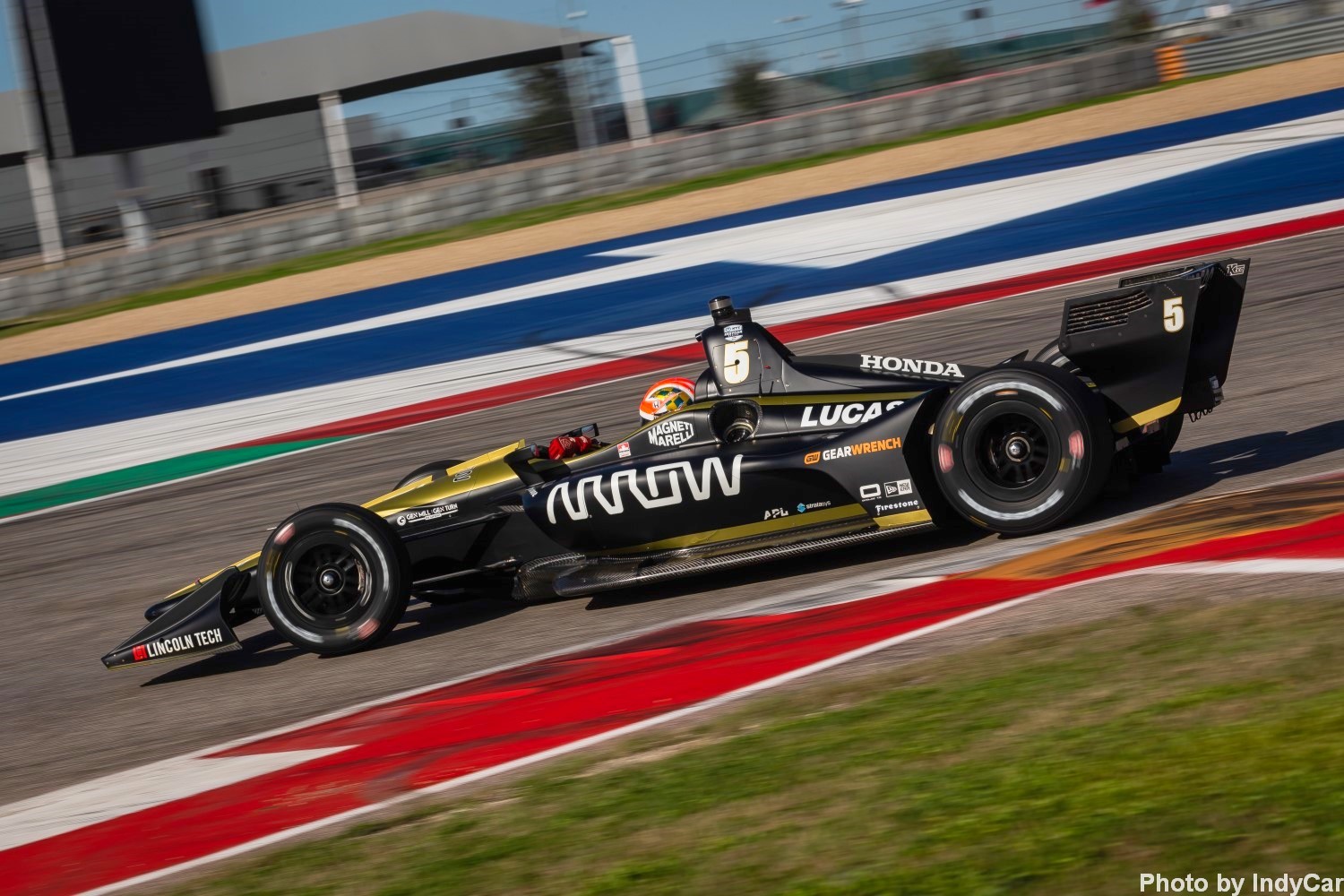Video: F1 vs IndyCar at COTA (Update)
 |
| AR1.com agrees with Mr. DeBruhl – close racing wins over outright speed any day, any time |
UPDATE
A reader writes, Dear AR1.com, Even though I'm no longer a part of the IndyCar broadcast team, I'm still a fan and had to chime in on your posting regarding how the F1 purists think watching IndyCar is like watching paint dry.Let me start by saying that I'm also a big F1 fan having followed it since I was a kid and spent years as part of the broadcast teams for various networks. Having said that, the reality is that while speed is an important element of any race, it's not the only element.
Fans in the stands or on TV can't tell the difference between a car going 180 mph and one going 200 mph. What they can see is wheel to wheel competition. Look at the number of passes in IndyCar races compared to those in F1 and the results are astounding.
At last year's USGP at COTA there was only a single pass for the lead that wasn't the result of a pit stop. Had it not been for Sebastian Vettel's first lap incident, the number of passes would have been significantly lower.
Right now IndyCar offers some of the best wheel to wheel competition in the world. Nearly every race is exciting to watch. I say this not to knock F1, but to make the point that F1 needs to aspire to the same goal.
I remember once standing with Tom Sneva (the Gas Man) watching the last lap of a Formula Mazda event at Phoenix International raceway. It was a photo finish with three cars crossing the line at the same time. Tom looked at me and pointed out the fans in the stands were going crazy. He pointed out that none of them noticed or cared that the cars were only going 40 MPH (OK, he joked, but I got the point).
Speed is important, but wheel to wheel racing and passing is what it's all about.
Have fun following IndyCar this year. I'll be watching it all from afar. Rick DeBruhl
 |
| Hinchcliffe |
02/14/19 IndyCar is getting hammered online on social media because the IndyCars are 14 seconds per lap slower than an F1 car around the Circuit of Americas. However, that is not entirely true – Lewis Hamilton's lap shown below was in qualifying trim with the power unit set at maximum output and the car on the softest rubber available.
The IndyCar of James Hinchcliffe is on rock hard Firestone black tires, no push-to-pass and the engine not set at qualifying power. In qualifying trim the IndyCar should only be 11 to 12 seconds per lap slower. The F1 crowd says it's like watching paint dry but let's be real – IndyCars have narrower tires and no development is allowed on the spec chassis. Also, IndyCar budgets are $10 to $15M per year vs. the Mercedes budget (Hamilton's car) of $400M per year. Yes, the current IndyCar engines are anemic and have no KERS to help it along, but that will change in 2021 when they get around a 200 HP increase.
Note: The video shows at 18s delta but Hinchcliffe was not on a really hot lap. At the end of the day Colton Herta and Alexander Rossi were within 14s of the F1 lap record. Mark C. reporting for AR1.com
